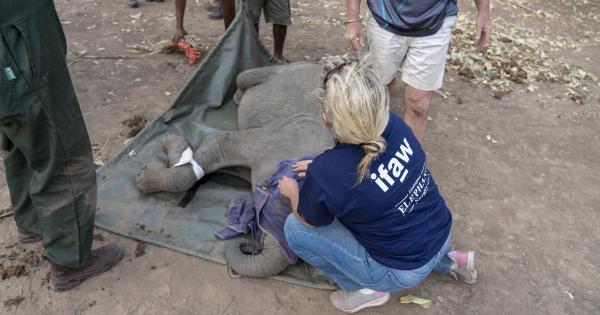Allergies are a common condition that affects many people worldwide. While most allergic reactions are mild and easily manageable, some individuals may experience a severe allergic reaction known as anaphylaxis or allergic shock.
Anaphylaxis is a life-threatening condition that requires immediate medical attention. It is important to recognize the signs of allergic shock and know what to do in such situations to ensure the safety and well-being of the affected person.
1. Understanding Allergic Shock
Allergic shock, or anaphylaxis, occurs when the body’s immune system overreacts to a triggering substance or allergen. The immune system releases a flood of chemicals, such as histamines, which can lead to a rapid and severe allergic reaction.
This reaction can affect multiple organ systems, including the skin, respiratory system, cardiovascular system, and gastrointestinal tract.
2. Common Causes of Allergic Shock
There are numerous substances that can trigger an allergic reaction leading to shock. Some of the most common allergens include:.
- Foods such as peanuts, tree nuts, shellfish, and eggs
- Insect stings or bites
- Medications, particularly antibiotics and non-steroidal anti-inflammatory drugs
- Latex
- Environmental allergens like pollen, dust mites, or pet dander
3. Recognizing the Signs
Anaphylaxis can progress rapidly, and early recognition of the signs is crucial. Some common symptoms of allergic shock include:.
- Skin reactions: Itching, hives, redness, and swelling
- Difficulty breathing: Wheezing, coughing, shortness of breath, or throat tightness
- Low blood pressure: Dizziness, fainting, rapid pulse, or confusion
- Abdominal pain, vomiting, or diarrhea
- Swollen tongue or difficulty swallowing
It’s important to note that symptoms can vary from person to person, and not all individuals experience the same signs.
4. Immediate Actions to Take
If you suspect someone is experiencing allergic shock, it is crucial to take immediate action to help prevent the condition from worsening. Follow these steps:.
- Call for emergency medical assistance: Dial your local emergency number right away. Anaphylaxis is a medical emergency that requires professional intervention.
- Administer epinephrine if available: If the affected individual has a prescribed epinephrine auto-injector (EpiPen), assist them in using it according to the instructions provided. Epinephrine can help reduce the severity of the allergic reaction.
- Help the person lie down: Elevate their legs if possible to improve blood flow. This position helps combat the drop in blood pressure.
- Loosen tight clothing: Remove any constricting items like belts or neckties that may interfere with breathing.
- Monitor breathing and heartbeat: Keep a close eye on the person’s vital signs. If they become unresponsive or their breathing stops, be prepared to perform CPR if trained to do so.
- Comfort the person: Reassure them and help keep them calm. Anxiety can exacerbate the symptoms.
- Do not give oral medication: Avoid giving any oral medication to the person experiencing anaphylaxis, as it may interfere with their ability to swallow or worsen the situation.
5. Aftercare and Follow-Up
Once emergency medical services arrive, they will take over the management of the situation. However, it is crucial to stay with the affected person until help arrives.
After the episode of anaphylaxis, the individual may require observation and further medical assessment to ensure their condition stabilizes.
6. Prevention and Preparedness
While it may not always be possible to prevent allergic reactions entirely, taking certain precautions can significantly reduce the risk of anaphylaxis:.
- Avoid known allergens: Identify and avoid substances that trigger allergic reactions for you or your loved ones.
- Wear medical alert identification: If you have a severe allergy, wearing a medical alert bracelet or necklace can help inform others about your condition in case of an emergency.
- Inform others: Notify close friends, family members, and colleagues about your allergies, especially if you are at risk of anaphylaxis.
- Carry an epinephrine auto-injector: If you have a history of severe allergic reactions, keep your prescribed epinephrine auto-injector on hand at all times. Ensure that you and those close to you know how to use it properly.
- Make an emergency plan: Create a clear plan of action with your healthcare provider, including steps to take in case of an allergic reaction.
7. Seeking Medical Advice
After experiencing an episode of allergic shock, it is vital to seek follow-up medical advice to determine the underlying cause and manage future risks.
An allergist or immunologist can help identify specific triggers through allergy testing and provide guidance on preventive measures and emergency preparedness.
8. Conclusion
Allergic shock, or anaphylaxis, is a severe and potentially life-threatening allergic reaction that requires immediate medical attention. Knowing the signs of anaphylaxis and what actions to take can make a difference in saving a person’s life.
By being vigilant, prepared, and informed, individuals at risk and their loved ones can minimize the dangers associated with severe allergic reactions.































